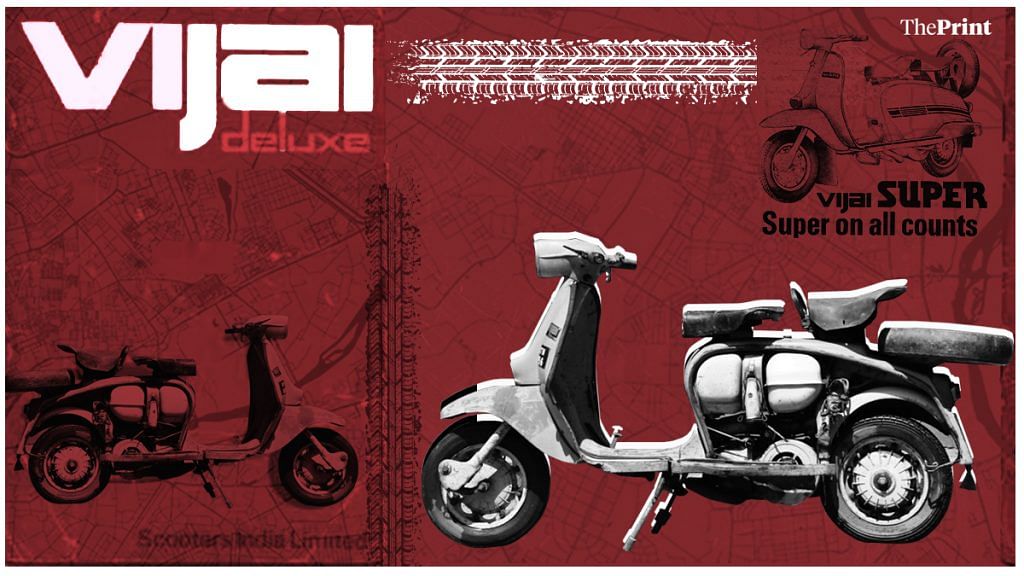“The best deals on wheels” — ask any vintage automobile enthusiast and they will not deny this claim in advertisements of Vijai Super/Deluxe Scooter. When the Indian men’s cricket team won the World Cup for the first time in 1983, the government gifted each member of the winning team a Vijai Super Scooter.
For Indians growing up in the 1970s and ’80s, Vijai Super was a prized possession. Years before Bajaj became near-ubiquitous, Vijai gave Indians the joy of scooter riding. It was the first time, for many middle-class families, that their dreams of owning a vehicle could be realised.
Manoj Kumar, an Ambala-based automobile enthusiast, recalls, “There was no scooter like Vijai Super, and I never found one ever again. I rode it for several years smoothly, there were no issues with the scooter at all.”
Produced by Scooter India Ltd, it had a sleek design and styling that made it an instant hit — think a unique headlight, easy-to-read speedometer and centrally-placed engine.
The Italian and Pakistani connections
Scooter India Ltd, a company owing its origin to the Italian company Innocenti, was opened in 1972. Then Prime Minister of India, Indira Gandhi, laid its foundation stone in Lucknow. Innocenti was incorporated by the Government of India, which bought stock, barrel and rights of production from the Italian company and moved the production to India under SIL’s name. The company was initially started as a joint venture between Innocenti and Automobile Products of India (API) which used to make Lambretta scooters.
After three years, it began the production of scooters under the brand name of Vijai Super for the domestic market. The first scooter to be manufactured by SIL was the Vijai/Deluxe DL, which was further enhanced to Vijai Super. It is believed that the name of the scooter Vijai — which literally means victory — was inspired by India’s 1971 victory in the war with Pakistan.
SIL later added one more wheel to its product range and introduced three-wheelers under the brand name of Vikram/Lambro. The three-wheeler proved to be a good investment with a durable life and economical prices. These three-wheelers became more relevant in the socio-economic environment for transporting goods and passengers at least cost.
Also read: Hamara Bajaj — the jingle that became a symbol of Indian pride
Increasing options, declining sales
However, in 1997, the company discontinued its two-wheeler production and concentrated only on manufacturing and marketing of three-wheelers. Many believe that the company lost its way due to lack of innovation, product diversification and increased competition by other scooter makers. Other products, such as Bajaj’s Chetak and Priya Scooters, were also providing tough competition to the brand.
“There was a time during the 1990s when there were very few mechanics to repair the Vijai Super. I eventually started repairing it myself, but had to finally sell it when its replacement parts were not available anymore in the market,” Manoj Kumar tells ThePrint.
Sale and production of three-wheelers continued but was also hit by strong competition.
In 2011, the government had proposed a package worth Rs 202 crore to revive the loss-making company. The company achieved profits by reducing the weight of its vehicles and lowering energy costs at its plant. But it was not enough to put the loss-making company back on track. In 2015, the Government of India, which holds 93.47% stakes, was reportedly planning to sell SIL.
In 2016, NITI Aayog identified the PSUs that were making losses and suggested disinvestment in them. SIL was one of them. The PSU was put up for sale in 2018, but according to a report by Economic Times, it has not received a single bid. Meanwhile, it plans to bring back electronic-vehicle technology.
Also read: Lambretta: The Italian two-wheeler that became a ‘dad scooter’ for the big Indian family
